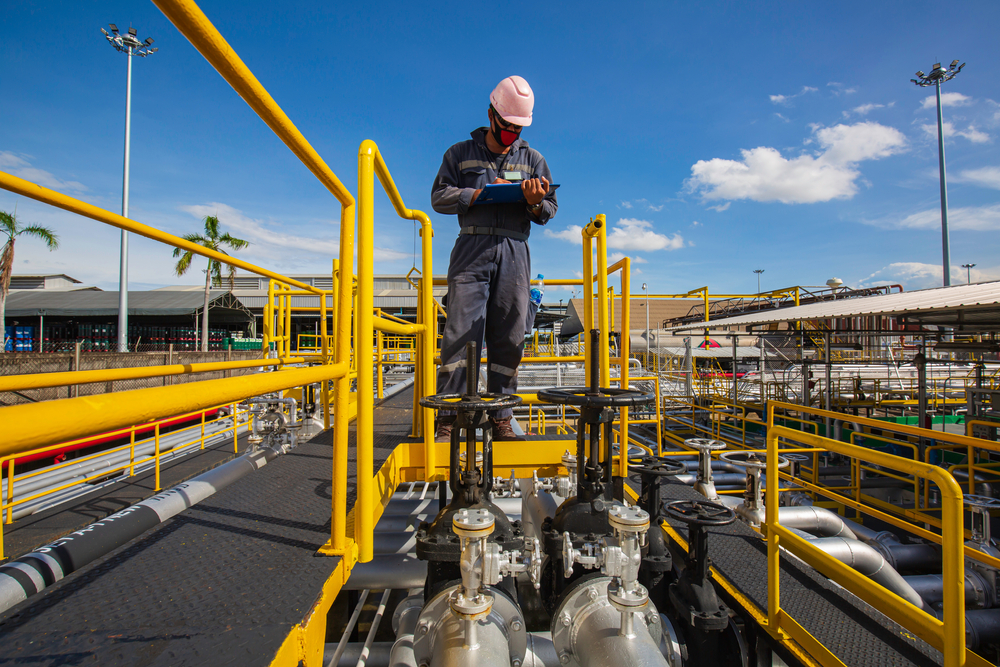As the Oil & Gas industry recovers from the Covid-driven demand crisis of 2020, companies are leaning more and more on the convergence of business strategy with technology to fuel the post-pandemic recovery and provide a foundation for innovation and transformation.
Chevron just reported annual profits of $15.6 Billion, making 2021 its most profitable year since 2014. In announcing the earnings, Chevron CEO, Mike Wirth, said “In 2021, we delivered record free cash flow and accelerated our progress towards a lower-carbon future. We’re an even better company than we were just a few years ago. We’re more capital and cost-efficient, enabling us to return more cash to shareholders.”
ConocoPhillips Chairman & CEO, Ryan Lance, announced record Q3 2021 earnings recently and attributed the results to delivering on cost synergies and “peer-leading” returns on capital. This is driven in part by “strong operational performance across the company’s asset base, including successfully planned maintenance turnarounds.”
Harnessing Technology for Business Process Transformation
A common theme among Oil & Gas players who have successfully navigated the most recent downturn is the focus on operational efficiency and improved cash flow. In the past 10 years (and beyond) there have been multiple downturns in the Oil & Gas industry. These downturns were traditionally addressed through various operational efficiency measures which invariably led to deep cost-cutting and layoffs, all of which ultimately did little to avert the next crisis. With the added complexity of Oil & Gas companies now being under intense pressure to engage in the Energy Transition, what then makes this recovery different from past ones?
According to Deloitte, in their recent Deloitte Insights “Tech Trends 2021” and “Tech Trends 2022” reports, what changed with the Covid-induced downturn of 2020 is that Oil and Gas players who successfully navigated the crisis did so by learning to “harness technology to … increase the resiliency of their business and technology operating models.”
Thanks to the advancement in technologies, such as cloud computing, data analytics, and AI, Oil and Gas companies are learning to capitalize on the interplay between business strategy and technology. This not only reduces operational costs but also reimagines their business models.
Cloud service providers, software vendors and integrators are building industry-specific, cloud-based solutions to provide their customers with flexible platforms for growth. As these solutions continue to evolve, Oil & Gas companies have become more comfortable with retiring obsolete legacy systems in favor of “cloud-sourcing” platforms from external vendors to manage their operating processes. Oil & Gas players are increasingly taking advantage of modular cloud-based business processes that are designed to evolve with their business strategy. Cloud technology is enabling companies to become more agile in the way they implement and maintain core processes thus freeing up resources to drive the strategic and technical innovation that will sustain competitive differentiation.
While core operating processes are moving to the cloud, technologies such as AI, data analytics, and remote monitoring & diagnostics are helping Oil & Gas companies move from a business model driven by “personal heroics to engineered performance”. Remote monitoring of assets, combined with predictive failure models helped O&M departments weather the lockdowns and resource shortages of the 2020 crisis. Data collected from assets is already transforming the Oil & Gas industry by supporting more informed operational and strategic decision-making about an asset’s lifecycle and ROI potential.
The improved cost efficiency and operational performance that fueled the Oil & Gas recovery in 2021 was enabled in part by the increasingly sophisticated ability to analyze and interpret asset performance data. According to analysts, the next step in this evolutionary process will be understanding how data can be used for “native machine consumption.” This is so that it is not simply being used by humans to enhance decision making, but can be used by machines to make better, real-time decisions without human intervention.
Strategy and technology are converging in new ways in the Oil and Gas industry. Cloud computing, combined with the power of data analytics and AI is helping the industry to reinvent itself on a foundation of stable but agile processes and visibility to operations. The successful alignment between organizational and technology strategies has the potential to change the speed and trajectory of innovation in the Oil & Gas industry. It will not only enable today’s strategy but also help sustain innovation in a rapidly changing environment.


Share this: